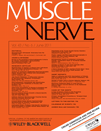Electrodiagnostic consultation and identification of neuromuscular conditions in persons with diabetes †
Disclosure: The opinions reflected in this article are those of the authors and do not reflect the views of the Department of Veterans Affairs or the U.S. Government.
Abstract
Introduction: Although the American Association of Neuromuscular and Electrodiagnostic Medicine recommends that electrodiagnostic procedures should be performed by physicians with specialty training, these procedures are increasingly being performed by non-specialists. Methods: We used a nationally representative sample of Medicare beneficiaries with diabetes who used electrodiagnostic services in 2006 to examine whether specialists and non-specialists were different in the rates of identifying common neuromuscular conditions. Results: Specialists (neurologists and physiatrists) performed 62% of electrodiagnostic consultations; non-specialist physicians and non-physicians performed 31% and 5%, respectively. After adjusting for age, race/ethnicity, diabetes severity, and comorbidities, specialists were 1.26–9 times more likely than non-physicians to diagnose polyneuropathy, lumbosacral radiculopathy, cervical radiculopathy, carpal tunnel syndrome, and ulnar neuropathy. Almost 80% of electrodiagnostic studies performed by specialists included electromyography testing; fewer than 13% by non-specialists did. Conclusions: Inadequate use of electromyography and fewer specific diagnoses suggest that many non-specialists perform insufficiently comprehensive electrodiagnostic studies. Muscle Nerve, 2011




